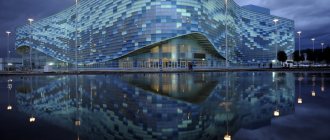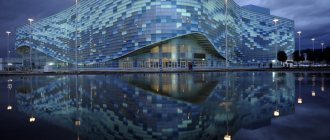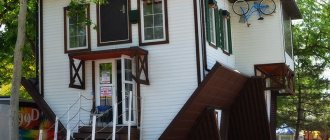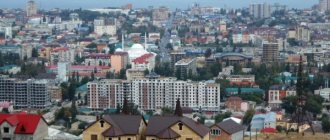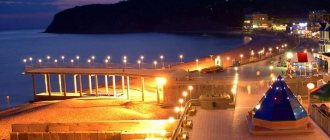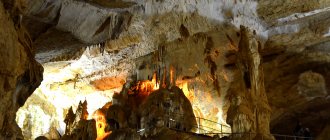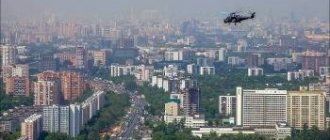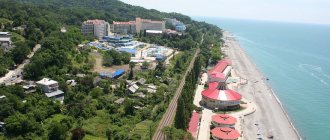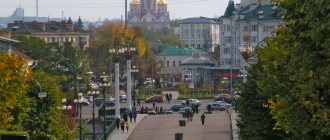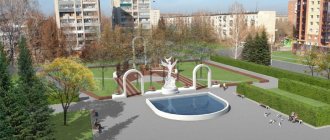If you are a fan of ancient architecture and outdoor recreation, then a tourist trip to the city of Borovichi (you will find photos and descriptions of attractions below), located in the Novgorod region, will be the best solution. This place was first mentioned in Old Russian chronicles back in the 15th century. The small village was a haven for traders and artisans. In the 19th century, lime, brown coal, pyrites and refractory clay began to be mined in Borovichi, which led to the rapid development of the city. Let's take a closer look at the city of Borovichi, its attractions and what to see in it.
Bridge over the Msta River
The arch bridge, built more than a hundred years ago, is rightfully considered the hallmark of the city. The creation of the engineer Belelyubsky has the shape of a stretched bow and majestically rises above the Msta River. The openwork design gives this powerful and heavy structure visual weightlessness and airiness. In the 90s, by order of the president, this object began to be considered a historical and cultural heritage of a federal scale.
At the end of the 19th century, the Borovichi City Duma decided to build this bridge. A lot of money was required, and the city budget was unable to cover all costs. For this reason, the authorities began to collect the necessary amount through voluntary donations. After the money was collected, representatives of the Duma turned to the designer Belelyubsky, who created three designs for a bridge across the river. The choice fell on an arched structure. Construction of the bridge began in 1902, and within three years the work was completed.
Natural attractions of Borovichi
Of all the Borovichi treasures, nature deserves special mention. The main highlight of Borovichi nature is its rare water bodies. Ecotourists will also be delighted by the delightful Opechensky Arboretum.
Arboretum
- Address: s. Opechensky Posad, Borovichi district.
An amazing park in the village of Opechensky Posad - the brainchild of local resident S.A. Ushakova. The passionate botanist began planting exotic plants in 1973. For more than 40 years, the collection has grown, in the truest sense of the word, to the size of a park. Currently there are 180 rare species of trees.
A hardworking enthusiast, with his own efforts and at his own expense, improved the territory, laid paths, dug a pond, made a fountain, installed benches and gazebos.
Semyon Andreevich did not stop there and not only filled his plot with amazing gifts of nature, but also placed funny wooden sculptures everywhere. The largest character is a huge life-size bear; a device with a recording of Ushakov’s voice is inserted inside the figure. Unfortunately, the master himself died in 2014 at the age of 90, but his creation lives and thrives.
Semyon Andreevich’s work was continued by his three elderly daughters; volunteers and caring people help pensioners. Ushakov was able to achieve the status of a natural monument for his arboretum, but never received any financial support from the state. The park is maintained by the owners and donors.
Source rights. Jacob Borovichsky
- GPS coordinates: 58.393639, 33.903056.
Not far from the Borovichsky Bridge, a pure spring flows out of the ground, consecrated in honor of the local saint - the righteous Jacob. Water is extracted from a well about 30 meters deep. A chapel was built above the key in honor of the icon of the Mother of God “Life-Giving Spring”; it is this image of the Blessed Virgin Mary that adorns the entrance to the church. Inside you can always collect holy water from a large bowl.
Meglec natural fountain
- Coordinates: 58.400313, 34.605497.
Near the village of Megletsy you can see a rare natural phenomenon for the Novgorod region - a fountain about three meters high. A noisy stream of water gushes from a wide pipe, and a clear stream runs from the source among the trees. The magical landscape is complemented by large stone boulders that line the pipe.
Borovichi rapids
- Coordinates: 58.351829, 33.934714.
On the Msta River, over a 30-kilometer stretch, there are more than 50 rapids. The most interesting site is located near the village of Shibotovo on the road to the village of Opechensky Posad. Here, in the path of the fast river, large outcrops of limestone arise; the stream crashes into the rapids, seethes and foams, it seems as if the water is boiling.
The Borovichi rapids are not only a beautiful natural phenomenon, but also an important part of the history of the region, because they determined the occupation of many residents of the city and villages: local men worked as pilots and helmsmen, guiding ships through a dangerous section of the river.
Underground river Poneretka
- Coordinates: 58.261888, 34.011295.
The Poneretka River, or Poneredka, is one of the tributaries of the Msta. The peculiarity of the tributary is that it flows underground at a depth of about 4 meters. The length of the underground cave is almost 1.5 kilometers.
Near the Borovichi rapids, the Poneretka comes out, runs down the stone steps in a stormy foamy stream and flows into the Msta. Many tourists come to admire the beautiful waterfall; extreme sports enthusiasts go kayaking.
Blue Lagoon
- Coordinates: 58.452506, 33.882141.
Not far from the village of Volgino there is an amazing creation of nature - a lake with blue water. Local residents nicknamed the reservoir “Blue Lagoon”, although its color is not constant and changes depending on the lighting. In cloudy weather, the lake appears dark green, like an emerald. Another name for the reservoir is “Salt Lake,” although the water does not taste salty, but sour.
Previously, quarries were developed near the village, but over time the reserves became scarce and the mines were abandoned. One of the quarries was filled with water, which for some reason acquired an azure hue. Surprisingly, the lake appeared at depth and not even in a lowland, but on a hill. Thanks to the unusual color of the water and sandy beaches, the landscape is reminiscent of the Maldives. Many people come ashore to imagine themselves on an exotic island and take spectacular photos.
Museum of Local Lore
In this museum, thanks to exhibitions and slide shows, tourists can get acquainted with the history of the city of Borovichi, the sights of which attract many tourists. After getting acquainted with the life of merchants and artisans, everyone can take part in a traditional tea party, where they can try local baked goods and a variety of confectionery products made in the city factory.
The museum was opened at the beginning of the 20th century, and at first the exhibits included antique furniture, books, paintings, as well as wooden, leather and ceramic products - the main items of noble life. Today, in the collection of the local history museum, in addition to local industrial products, you can find exhibitions from the times of the Great Patriotic War.
Borovichi monuments and sculptures
From the city monuments you can find out who Borovichans loved and appreciated in different periods of history. One of the monuments, which is dedicated not to a person, but to an object, has become a kind of symbol of the talent and ingenuity of local residents.
Monument to A.V. Suvorov
- Address: Volodarsky Square.
The bust in the Suvorov museum-estate is not the only Borovichi monument dedicated to the military leader. A monument to Alexander Vasilyevich was also erected in the regional center. The bronze figure of the commander originally adorned the central city park.
In 2000, the sculpture was restored and placed on Volodarsky Square. The military leader is depicted in full height; the height of the monument, together with the marble pedestal, is more than 4 meters.
Monument to S.M. Kirov
- Address: Kommunarnaya street.
The famous revolutionary and politician Kirov contributed to the development of Borovichi. In the 20-30s of the last century, Sergei Mironovich headed the Leningrad region, which at that time included the Novgorod region.
The Borovichi state farm received the name of the big boss. In 1936, a three-meter high monument appeared in Borovichi, created according to the design of the sculptor Z. M. Vilensky. In 2013, the monument was restored and moved to the 30th Anniversary of October Revolution Park.
Memorial "Eternal Flame"
- Address: Gagarin proezd.
The Great Patriotic War is one of the most tragic pages in the history of the city. About 4,000 Borovichi residents did not return from the front. In memory of all those who died in Victory Park in 1975, a memorial was created. The author of the composition is local drawing teacher A.I. Popov. In the center there is a high stele, in front of which an eternal flame burns; on the sides there are signs with the names of fallen heroes.
Monument to Internationalist Soldiers
- Address: Reppo Lane.
The monument to participants in local wars appeared in Borovichi relatively recently. The monument was erected in 2015; ordinary townspeople donated funds for its creation. The monument is made of granite, next to it there is a black memorial plaque on which all Borovichi veterans of military conflicts are listed.
Giant chair
- Address: Sofia Perovskaya street.
Borovichi know how to truly surprise. Walking through the streets of the city, you may suddenly stumble upon a huge 8-meter wooden chair. Next to the gigantic structure, even the tallest person will feel like a midget in the land of giants. The authors of the monumental creation are masters of the local furniture factory, next to which the marvelous object rises.
The Borovichi enterprise is one of the largest in the region; apparently, the workers erected a monument of such impressive size to demonstrate the limitless capabilities of the factory. One way or another, the marketing ploy worked perfectly: the wooden giant became not only an excellent advertisement for furniture makers, but also one of the most spectacular attractions of the city.
See also reviews of other cities of the Novgorod region - Staraya Russa, Valdai and Veliky Novgorod
Borovichi is a real decoration of the Novgorod region, one of the spiritual and cultural centers of the region. Traveling to this city is like traveling back in time, with something interesting waiting around every corner.
Old station
Arriving in the city, the first thing tourists encounter is the station building, which in itself is a landmark of Borovichi. The facility was built at the end of the 19th century.
The single architectural ensemble includes four buildings located parallel to the railway line:
- station building;
- warehouse space;
- luggage compartment;
- water tower.
A special feature of the station is that every object is made of wood. The main room is equipped with a beautiful openwork cornice.
Refractory bricks were produced in Borovichi, and to export them, Borovichi industrialists built a railway with their own money. The line, more than 30 kilometers long, was launched in 1878.
The landmark of the city of Borovichi became the location for the filming of the film “State Councilor”.
Despite its antiquity, the facility is still in operation and welcomes guests from all over the world.
A little history
If you look into the Old Russian chronicles, the first mentions of Borovichi can be found already in notes from the 15th century. At that time, the small village was not yet a city and was referred to as the Borovichi churchyard. But after a hundred years, the churchyard becomes the Borovichi Row, the population of which is mainly traders and artisans. Local residents also have one more occupation: since the town is located on the banks of the Msta River, local residents were engaged in guiding ships through the rapids of the riverbed.
Borovichi received city status only in 1770 during the reign of Catherine the Great. A turning point in the history of a provincial, unknown town was Suvorov’s exile. He served it in one of the neighboring villages, from which he left for another military campaign - the same one across the Alps. This was precisely the reason for later opening a museum-reserve named after the great general here.
The active development of the town dates back to the 19th century, when rich deposits of lime, pyrites, brown coal and refractory clays were discovered in its vicinity. It is quite natural that the production of various products from refractory materials began in Borovichi. Today it is a modern, developing town that warmly welcomes tourists - over several centuries, quite a few interesting sights have accumulated here; there is also somewhere to stop and have a snack, as well as have fun for the whole family.
Suvorov Estate
35 kilometers from the city you can find an estate named after Suvorov, the famous commander. It is located in the village of Konchanskoye-Suvorovskoye - the family estate of the Suvorov family (at one time his father bought this land).
In the 40s of the last century, in a settlement that was previously called simply “the village of Konchanskoye,” a monument to this historical figure was erected, and the village was renamed, adding the word “Suvorovskoye” to the name.
The museum building was opened two years after the installation of the monument. The exhibition was dedicated to peasant farming and life during the times of the landowner Suvorov.
Today, on the territory of the museum, tourists can see the commander’s winter house, an ancient well, a park area with a pond, a gazebo and centuries-old oak trees.
Some objects were reconstructed at one time because the buildings were wooden and could not be preserved in their original form. Items inside the estate also, unfortunately, have not been preserved. However, some things that belonged to Suvorov were still preserved and can be seen in the museum. Among the exhibits there are rare and interesting paintings.
What to see in the Novgorod region - 1
Achieved the following:
- take a walk through the 10th century Slavic village,
- visit the holy spring,
- walk around the pitiful remains of Suvorov’s estate “Alexandria”,
- take a walk around Borovichi and the “suburbs”.
We didn’t have time to stop by Suvorov’s estate in the village of Konchansko-Suvorovskoye and look into one of the abandoned villages. We definitely decided to come back here in the summer.
UPD: in the summer of 2016, we also looked at Suvorov’s estate and wandered around the abandoned Tidvor. I'm glad that the plans are coming true. Read about this trip here:
Report on a car trip in the Novgorod region - 5 interesting places
And now, in order.
We left St. Petersburg relatively early - at seven in the morning, and at ten we were already at the gates of the Slavyanskaya village in Lyubytino. A most interesting place! Most of the interesting places in the Novgorod region pale in comparison to the village - and in it (in the region) there is enough to see.
Slavic village in Lyubytino
Right at the entrance to the museum, along the way we noticed high hills - man-made burial mounds. And they didn’t take a picture, can you imagine?
The Slavic Village Museum is located on the outskirts of the village of Lyubytino. In the only building there is a small local history exhibition and a film showing the main moments in the life of the ancient Slavs. Tickets for the open-air exhibition - in fact, the Slavic village itself - are also sold here. You can run around it all in ten minutes - there are about a dozen buildings here. Run around and not understand anything... Well, houses, so what?...
The 10th century Slavic village should only be visited with a guided tour. In a fenced area, on the site of an excavated settlement, the life of the Slavs of the 10th century has been recreated.
The buildings are said to stand exactly as they did 11 centuries ago. Although, how can you be sure of this if no pictures and photographs have been preserved?... But it is believed that this is exactly how our ancestors lived. In houses without windows, with roofs covered with turf, with doors that only a two-year-old child could walk through without bending. The four residential houses are different both externally and internally. With or without verandas, awnings. The stoves in all houses are installed differently, depending on the habitat of the Slavs - in the west, north or south of Rus'. For some reason, without the east. Everything else is the same - cramped space, unpretentiousness and an abundance of birch bark products. The tour lasts about an hour, costs a penny and gives a lot of information about the Western, Southern and Northern Slavs. How they lived, how old they lived, what they ate, what they wore, and why, in fact, the stoves were installed differently. The entrance to all the houses is open; the most curious can turn the handle of the millstone, strike a spark from flint and try themselves as a weaver.
At the end of the excursion, almost by force, the guide helps you put on Slavic clothes - men put on chain mail, women - some kind of ponchos. And then the men are not released until they hit the target with a spear.
A worthwhile place, we highly recommend it to everyone! A must-see regarding what to see in the Novgorod region. Of course, it’s better to come here in the summer (it’s warmer), but we weren’t offended in the chilly November. And Msta is magnificent here.
Having frozen to the very hair follicles during the excursion, we watched the exhibition in the administrative building of the museum and a film about the Slavs. At the same time we warmed up. In the room for showing the film there are models of the same buildings that exist on the territory of the village - Tanya fell into puppy delight, finding small houses and telling what is in the same ones, only bigger and real.
Of the minuses, only one was noted in the Slavic Village - the toilet. This is a village toilet, very noble in appearance, but with an ordinary cesspool inside. And you won’t find it right away - you need to ask leading questions to the staff.
- Ticket price to the Slavic Village: 70 rubles + 30 rubles for photography.
- Opening hours are from 10:00 to 17:00 from October to March and from 9:00 to 18:00 from April to September.
- Closed: Monday, last Friday of the month and Sunday from October to May.
Animals are not allowed into the museum territory!
I recommend reading: What to see in Veliky Novgorod in one day with a child
After a visit to the 10th century Slavic village, we went to Lyubytino for lunch. We went not far - 380 meters from the Veche cafe (Sovetov St., 10). From the outside it looks like a provincial basement cafe, but in fact it’s a canteen. With quite decent food and reasonable prices - soups from 50 rubles, main courses from 100. For three soups, two main courses and two coffees, they left 500 rubles. We recommend the cafe. As it turns out tomorrow, it would be necessary to stop by the next day. We didn't stop by and made a mistake. But more on that below, “tomorrow.”
We took a photo next to the cafe of the House of Culture, located right in the building of the Church of the Nativity of the Blessed Virgin Mary from the late 19th century. A church without crosses is a more than pitiful sight... Nowadays it is rare to see recreation centers and other technical schools within church walls.
Lyubytino made a good impression. There were villages and towns along our travel route that were more interesting, and others that were more boring and sad. Lyubytino is quite clean, without the local Uncle Vasyas with the characteristic beetroot tint of their faces and desperately barking Bobiks. There are many shops, many cafes, and baked goods stalls right on the streets. Not boring, in short. Not boring at all. There is even an abandoned railway station:
Suvorov's estate "Alexandria" and waterfalls
We went to Suvorov’s estate “Alexandria” in the village of Kamenka . They say that it was in Kamenka that Suvorov’s mother had a vision of Saint Nikander, who predicted to her the birth of a son who was destined to become a great Russian commander. Many years later, the grandson of Alexander Vasilyevich (also Alexander) converted the estate into a military hospital. And now there is a children's Orthodox camp here. In a sad and crumbling state. In November, of course, everything is closed here. But something tells us that there is not much optimism in Kamenka even in the summer. Both the estate and the church (also without domes) are in very poor condition.
For a change, we visit waterfalls (do you know that in the Novgorod region you can see real waterfalls???)
Taken from the geocaching site:
The Tikhvin ridge is the northern spur of the Valdai Upland. It runs from the Msta River in the south and almost to Svir in the north. The southern part of the ridge is called the Sherekhovsky Heights, it is here that the rivers flowing into Msta cut through the hills, forming small waterfalls. One of the waterfalls already has a cache “Matsesta on Priksha”. This cache is dedicated to something else, on the Belaya River. In general, among the landscape natural objects of the Novgorod region, the Belaya Valley, and the entire landscape of the village of Sherekhovichi, occupies not the last place. The village itself is on hills and surrounded by hills. While I was looking for a tractor driver, I managed to take a good look at everything. A dirt road leads to the waterfall, don’t let the mention of a tractor driver scare you, in the summer the road is passable for any car, but in the spring the clay turns into slime, and the slightest mistake by the driver is enough for you to be “slipped” to the side. Although in spring, of course, the river is fuller and the waterfall is more beautiful. Coordinates of the waterfall itself: N58` 46.766 / E33` 33.761 There is a clearing at the top where you can camp.
Estate of landowner Nekhlyudov
Little is known about this cultural site, but its mysterious appearance attracts many tourists. At the end of the 19th century, the landowner Nekhlyudov built a real castle in the Gothic style near Borovichi. After some time, the owner of the house changed, and the right to property was transferred to a local entrepreneur, Wakhter, who produced clay bricks.
There are legends among the people about a ghost living inside the castle. They say that at night you can hear roaring and tapping.
During Soviet times, a school was located in the estate. Nowadays, the owner of the object lives outside of Russia, and the castle has a neglected, dilapidated appearance. The walls of the estate are covered in cracks, and the windows and doors are boarded up.
If you want to get an unforgettable aesthetic pleasure, then be sure to visit this cultural site in the city of Borovichi. It is located not far from the city itself, near the village of Khvoyny.
What other places can you visit?
There are beautiful places everywhere in Borovichi. For particularly sophisticated tourists, we recommend visiting three attractions:
- Having got out of Borovichi, in Sosnovka you can get to the holy spring of Yakov Borovitsky. There is also a chapel and a local temple. Residents of the city often come to this place for holy water. The source of clean water is located at a depth of thirty meters. In the chapel you can see the icon of the Mother of God. Another icon is made on a linden board.
- Tourists will also be interested in visiting the suspension bridge in Opechensky Posad. It unites two local villages and is over 60 meters long. To create the object, transverse and longitudinal boards laid on steel cables were used. The cables are attached to pylons (pillars) installed at the beginning and end of the suspension bridge.
- In the city you can see an unusual sculpture made of wood - a giant chair. It is located near a local factory that produces furniture. This is a kind of monument to local production. Many people love to take pictures next to this amazing object.
If you love history, then you should go on an archaeological trip outside the city to explore and excavate local mounds and forts.
What to watch and where to go
- The calling card of Borovichi and one of the main attractions is the arched bridge over the Msta River. Its peculiarity is that it was the first of its kind in Russia. It was designed by Belelyubsky at the beginning of the last century and immediately became an example of bridge construction. The three-hinged steel structure of this bridge was later used as a model for the construction of the Sydney Harbor Bridge in Australia. In 1995, the bridge was included in the list of cultural and historical heritage sites of all-Russian significance. In 2005, the structure turned one hundred years old; now it is used as a pedestrian bridge and is a favorite place for tourists - memorable photos are taken here.
- There is also a local history museum in the town. History buffs can book a tour and learn more about the history of Borovichi by viewing exhibitions and slide shows showing the life of merchants and artisans of the county town. At the end of the excursion, everyone is offered tea according to local traditions; tea is served with sweets and pastries made at a local confectionery factory.
- One of the most important and oldest architectural monuments is the wooden station building. It was built back in 1876, and the station is still in successful use today. The building underwent a major reconstruction in 1976, but its appearance remained almost unchanged. This station can be seen in the film “State Councilor”.
- The Holy Spirit Jacob Borovichi Monastery is definitely worth a visit. It was built and consecrated back in the 14th century, and continues to function today. The Cathedral Church, built of stone in the 17th century, has survived to this day; before that, the monastery consisted of three wooden buildings in which 14 monks and an abbot lived. Near the walls of the monastery there is a working spring with healing water.
- Fans of architectural and historical sights will also be interested in the Trinity Cathedral. True, today there are no services held here; the local House of Culture is located in the temple.
- History buffs can go with archaeologists outside the city to excavations and explore the remains of mounds and ancient settlements. In Borovichi there is a very interesting monument - a huge chair made of wood. It was installed in front of a local furniture manufacturing plant as a symbol of production.
- Another attraction that is not exactly in Borovichi, but also very interesting, is the suspension bridge in the village of Gverstyanka. To tickle your nerves and walk across the bridge, you only need to drive a couple of kilometers from the city.
- Just beyond this bridge stands an abandoned, once very beautiful mansion. This is the Nekhlyudov estate. The building's architecture resembles a small castle; there is even a belief that the ghost of the former owner lives in it, wanders at night, moans and rumbles. Obviously, for this reason, none of the locals are buying the building or wanting to put it in order.
- If you travel in the summer and like to splash around in the water, then a visit to the local water park will be just right for you. There are two slides - straight and winding, four swimming pools - with paths, with fountains that create a massage effect, with a jacuzzi and a children's pool, as well as a sauna.
In addition to those listed above, there are also the following temples and churches in the district:
- Assumption Cathedral, built in 1800, this temple is distinguished by very interesting architecture, combining several styles.
- Church of the Holy Great Martyr Paraskeva - near this temple there is also a sacred spring.
- The church dedicated to the icon of the Mother of God “Tenderness”, built in 1871, is famous for its source of Yakov Borovitsky.
- Church of the Dormition of the Mother of God in Opechensky Posad.
You can stay overnight in one of the guest houses. Since Borovichi is a small and provincial town, it is difficult to find any information about local hotels and book a room on the global network. But this is not a problem - there is always a place to stay in the guest house. There are no problems with food either - there are enough small restaurants, cafes and snack bars. Of course, you won’t get any special delights, but you can have a hearty and inexpensive lunch or dinner. And you can get here from Moscow and St. Petersburg either by private car or by direct train. Borovichi in the Novogorod region is a small but cozy town that warmly welcomes its guests. Local residents are proud of their sights and willingly show them off to visitors. You can visit here both in summer and winter; a warm welcome and interesting excursions always await you
Where can you relax with the whole family?
If you are wondering where to go in Borovichi, the answer is simple: for a family holiday, you can visit the arboretum, located 35 km from Borovichi, in Opechensky Posad. The founder of the park is a resident of this village, S. A. Ushanov. Without assistance from the state, he created this unique creation for half a century.
The Opechensky Arboretum will delight the whole family with trees growing on its territory, both ordinary and exotic, such as Japanese spirea, Balkan pine or Korean forsythia. The park arouses interest not only with rare plants, but also with fantastic sculptures located throughout the area. This is a popular attraction in Borovichi. The place will also surprise tourists with a homemade fountain that looks like a captain’s bridge, as well as a three-meter-tall bear speaking in the voice of the park’s founder.
Opechensky Arboretum attracts tourists because of its beautiful pond, the island of newlyweds and the observation deck.
Regarding entertainment in Borovichi, Novgorod region, for a quality summer holiday it is recommended to visit the local water park in the city of Borovichi. Here you will find water slides, several swimming pools (including a children's pool) with all amenities, including a jacuzzi. Vacationers can take a steam bath in the modern sauna inside the complex.
Temples and monasteries of the city of Borovichi and its environs
In Borovichi and Borovichi district there are dozens of active churches and about the same number of destroyed ones. Several temples are especially valued for their antiquity, interesting origins, or revered shrines.
Holy Spirit Monastery
- Address: st. Alexandra Nevsky, 6.
A small quiet monastery stands within the city on the picturesque bank of the Msta River. The ancient monastery was founded in the 14th century, at the same time its main temple was built - the Temple of the Descent of the Holy Spirit. In 1544, the holy relics of the righteous Jacob of Borovichi were transferred to the church. Initially, all the buildings in the monastery, including three churches, were wooden. The first stone church was erected only in the 17th century; Patriarch Nikon himself contributed to the construction.
In 1732, there was a severe fire in the monastery, which completely destroyed the archives, and therefore almost all information about the monastery since its foundation. In the 19th century, the monastery began to grow stronger, more and more stone buildings appeared: the abbot's building, fraternal buildings, a fence with towers.
After the events of 1917, the monastery was disbanded. The beginning of the 21st century breathed new life into the centuries-old monastery. In 2000, reconstruction of churches and other monastic buildings began. Currently, the Church of the Holy Spirit, the Church of St. Jacob of Borovichi and the gate church of the Iveron Icon of the Mother of God with a bell tower have been restored.
Assumption Cathedral
- Address: Parkovaya street, 1.
A magnificent temple in the classicist style was built in the Kolenitsa settlement in 1800. It was here, on the outskirts of the city, as is customary in many settlements, that the city cemetery was located. Funeral services were often held in the new Assumption Cathedral, and the patronal feast day was celebrated on a grand scale. Parishioners covered the road to the church with fresh flowers and held a religious procession.
In 1840, two chapels and a low bell tower were added to the church. In 1901, the architectural ensemble was complemented by a free-standing brick bell tower. In 1911, the cathedral was restored, but believers did not rejoice at the beauty of the renovated church for long: the October Revolution soon took place and persecution of religion began.
In 1931, the cathedral was closed and partially dismantled, but in 1944 the building was unexpectedly returned to the parishioners. Less than 20 years later, a new disaster struck - Khrushchev’s anti-religious campaign. A registry office was opened in the rebuilt church, but the cemetery was simply abandoned. In 1990, the building was handed over to the Church and restoration began once again. By now, the temple has been restored to its original appearance. Ancient icons and wall paintings have been preserved inside.
VMC Temple Paraskeva Fridays
- Address: Kommunarnaya st., 33.
Not far from the Holy Spiritual Monastery there is a wooden church in honor of Paraskeva Friday. The people of Borovichi have long considered the great martyr their patron saint. The first building was built in the 16th century; in 1613, the church and the nearby churchyard were burned by Swedish troops. Years later, a chapel was erected on the ashes, which in 1796 was converted into a temple. Near the church there are remains of a birch grove planted in the second half of the 19th century.
In 1937, the new government banned religious services and closed the temple. The communists mercilessly “redrew” the architectural monument: the upper part of the building was dismantled, the icons were burned with a blowtorch, and a weaving artel began working inside. Near the church there was a holy spring and a small chapel, which were also destroyed. Paradoxically, it was the Pyatnitsky Church that was one of the first to be returned to believers back in the 60s and has not been closed since then. For several years it was the only functioning temple in the entire city.
Chapel of the Icon of the Mother of God “Tenderness”
- Address: Volodarsky Square, 25.
On the banks of the Msta River a snow-white chapel shines. It was here, according to legend, that the righteous Jacob Borovichsky was buried in 1452. The saint chose the path of foolishness for Christ's sake and spent several years in spiritual exploits. The young righteous man was killed by lightning, and the coffin with his body washed ashore near Borovichi. At first, the local residents did not want to take the coffin to land, however, enlightened by miracles, they buried Jacob with honors.
The saint’s relics were transferred to the Holy Spirit Monastery, and at the old burial place of the wonderworker, after some time, a wooden church was erected in honor of the “Tenderness” icon of the Most Holy Theotokos. In 1806, a terrible fire reduced the temple to ashes, and soon residents erected a wooden chapel in its place. Decades later, in 1871, the temporary structure was replaced by a beautiful stone chapel.
In 1937, a wave of bans swept through the city; most churches, including the chapel, were closed. Soon it housed a shoemaker's workshop, then a kerosene store. In the late 80s and early 90s, one of the city factories used the building as a warehouse. In 1993, the building was handed over to believers and reconstructed.
Church of the Nativity of John the Baptist
- Address: st. Vitalia Bianki, 45B, Sosnovka village.
St. John the Baptist Church is the youngest in Borovichi. The structure was erected in 2002 and has an unusual shape. The history of the appearance of this church is remarkable. One day, an ancient icon of John the Baptist was discovered in a warehouse; no one could answer the question of how it ended up in the room.
The amazing find prompted the factory workers to build a temple in honor of the saint. A plot of land was chosen for the church in the workers' village of Sosnovka. In 2006, the chapel of the Epiphany was consecrated in the church.
Chapel of St. Neil Stolobensky
- Address: Zavodskaya embankment.
Not far from the arched bridge, among the trees and bushes, stands the most unusual of the city’s religious buildings. The chapel of St. Nile of Stolobensky looks like a low multifaceted tower covered with a green semicircular roof. At the top of the original structure is a tall spire with a small dome and a cross.
Icons hang in arched recesses on the walls of the chapel. The brick tower took the place of a wooden chapel built in the 19th century near the ferry crossing. There was a holy spring near the church, but both shrines were destroyed in 1937 by the Soviet regime. The modern stone building was erected in 2014.
Where can you stay overnight and have something to eat?
The problem with an overnight stay will be solved by a local guest house. Borovichi is a small, provincial town, so it is difficult to find information about city hotels for booking a room on the Internet. But when you contact a guest house, you can always count on a free place to relax.
There are no problems with food in the city: you can always grab a bite to eat in small restaurants, cafes or snack bars. There are no exotic dishes here, but you can have a cheap and satisfying lunch with the whole family.
You can come to Borovichi from Moscow or St. Petersburg by car or by purchasing a train ticket.
